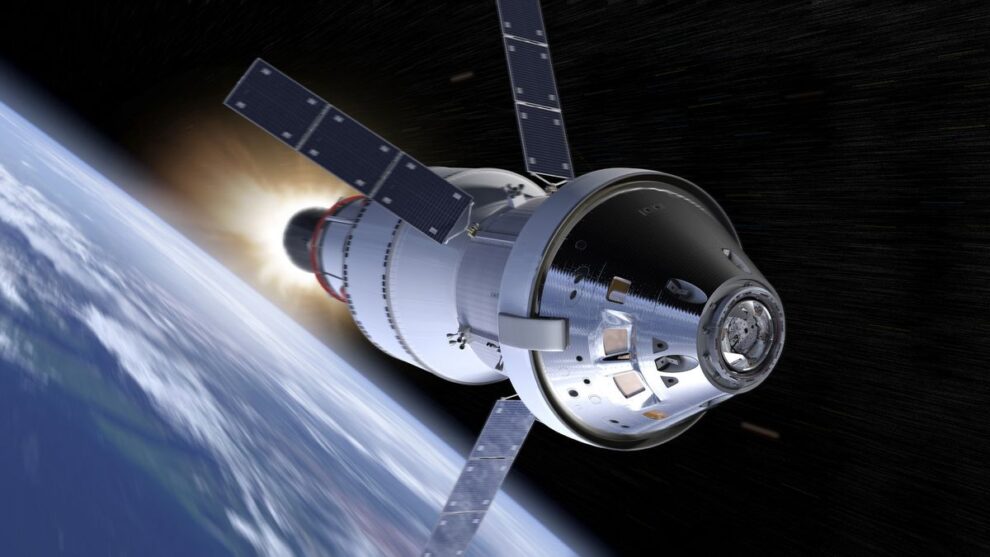In a breathtaking display of engineering prowess and unwavering determination, NASA has achieved a significant milestone in its quest to return humans to the Moon. Recent images circulating across the globe, particularly capturing the attention of space enthusiasts on platforms like Google Discover, showcase the towering Artemis 2 rocket taking shape within the iconic Vehicle Assembly Building (VAB) at the Kennedy Space Center in Florida. This pivotal step, known as stacking, involves the meticulous assembly of the massive Space Launch System (SLS) rocket that will propel the Orion spacecraft and its crew of astronauts on their lunar voyage.
The sheer scale of the SLS rocket is awe-inspiring, and seeing it gradually come together is a powerful reminder of humanity’s ambition to explore beyond Earth. The “space photo of the day,” as many are calling it, often features the Orion crew module being carefully hoisted atop the already assembled core stage and solid rocket boosters. This intricate operation requires pinpoint accuracy and a dedicated team of engineers and technicians working tirelessly to ensure every connection is perfect.
Artemis 2 marks a critical juncture in NASA’s Artemis program. Unlike its uncrewed predecessor, Artemis 1, which successfully orbited the Moon in 2022, Artemis 2 will carry a crew of four astronauts on a roughly 10-day mission around the Moon. This mission will serve as a crucial test flight, pushing the Orion spacecraft’s life support systems and other critical technologies to their limits in the harsh environment of deep space. The data gathered during Artemis 2 will be invaluable in preparing for the subsequent Artemis 3 mission, which aims to land astronauts on the lunar surface for the first time in over half a century.
The crew for Artemis 2 includes NASA astronauts Reid Wiseman, Victor Glover, and Christina Koch, along with CSA (Canadian Space Agency) astronaut Jeremy Hansen. Their selection represents a new era of lunar exploration, emphasizing international collaboration and diversity in spaceflight. Seeing their names associated with this monumental mission adds a personal touch to the unfolding story, making it even more relatable and inspiring for the public.
The process of stacking the Artemis 2 rocket is a multi-stage undertaking. It begins with the arrival and preparation of the individual components, such as the core stage, which houses the rocket’s main engines, and the two solid rocket boosters, which provide the initial thrust needed to escape Earth’s gravity. These massive elements are then carefully lifted and integrated onto the mobile launcher, a towering structure that will eventually transport the completed rocket to the launchpad.
The recent focus has been on the integration of the Orion spacecraft, which sits atop the SLS rocket. This includes the crew module, where the astronauts will reside, and the service module, provided by the European Space Agency, which contains essential systems for power, propulsion, and life support. The meticulous attachment of Orion signifies that the rocket is nearing its final form, a tangible representation of years of planning, development, and testing.
For those following the progress of the Artemis program, these images and updates evoke a sense of excitement and anticipation. It’s a reminder that space exploration is not just a distant dream but an active endeavor with real progress being made. The stunning visuals of the rocket stacking serve as a powerful symbol of human ingenuity and our innate desire to explore the cosmos.
NASA has been diligently providing updates on the Artemis program through its official website, social media channels, and press briefings. These sources offer detailed information about each stage of the mission, including technical specifications, timelines, and behind-the-scenes glimpses of the work being done. Examining these official records and statements confirms the accuracy of the news surrounding the Artemis 2 stacking and provides a deeper understanding of the complexities involved.
The Artemis program is not without its challenges. Building and launching rockets of this magnitude is an incredibly complex undertaking, with numerous technical hurdles to overcome. However, the dedication and expertise of the teams involved are evident in every step of the process. The successful stacking of the Artemis 2 rocket demonstrates that these challenges are being met head-on, bringing us closer to the goal of returning to the Moon.
The impact of the Artemis program extends beyond scientific discovery and technological advancement. It also serves as a source of inspiration for future generations, encouraging young people to pursue careers in science, technology, engineering, and mathematics (STEM). The stunning images of the Artemis 2 rocket being assembled can spark curiosity and ignite a passion for space exploration in the minds of children and adults alike.
As the Artemis 2 rocket continues to take shape, the world watches with bated breath. This mission represents more than just a trip around the Moon; it is a crucial step towards establishing a sustainable human presence on the lunar surface and eventually venturing to Mars. The “space photo of the day” is not just a visually appealing image; it is a snapshot of history in the making, a testament to human ambition and the power of collaboration in achieving seemingly impossible goals. The progress on Artemis 2 fuels the collective dream of once again walking on the Moon, and the recent stacking milestone brings that dream tantalizingly closer. The world eagerly awaits the next chapter in this incredible journey.








